How do you make maple syrup from maple sap?
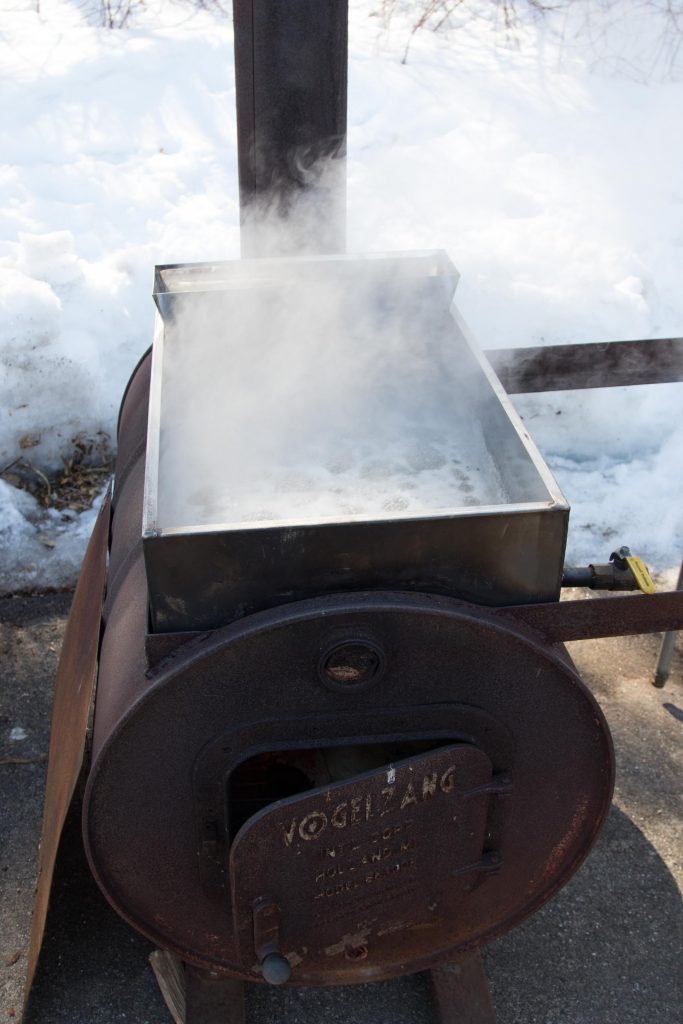
Key 1. Collect a Lot of Sap
Maple sap is not running every day of the year. In the winter it’s frozen in the ground. Maple sap is not always sweet and delicious either. When maple trees have leaves, their sap has many more chemicals in it that make it bitter. The chemicals are not tasty, but they help the tree grow!
In the spring, the maple sap runs when the days are above freezing (32 degrees Fahrenheit) during the day and below freezing at night. Usually this happens in early March, so we usually tap the trees in late February so they are ready to go when the sap starts running. If winter is a lot warmer, we might put spiles in our trees earlier.
Once you’ve decided it’s time to tap your tree, you’ll need the right equipment. You’ll need:
- A ruler or tape measure to make sure your tree is big enough
- A drill with a clean drill bit
- A spile
- A bucket or bag to catch the sap
Here are some popular choices for collecting maple sap:
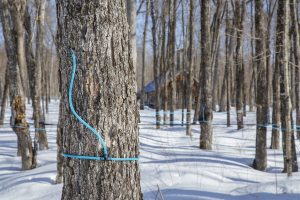
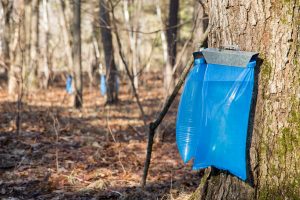
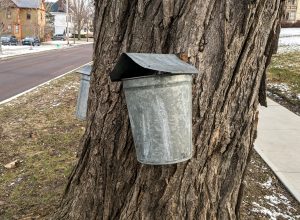
You can find many of these supplies at the Arboretum Gift & Garden shop or a local hardware store.
The University of Maine Extension team has a great video on how to tap your maple tree that you can watch here:
Just how much sap will you need to collect to make maple syrup? Sugar maple sap is about 3-4% sugar. This means there is about 1/2 cup of sugar in every 1 gallon of sap.
We use the “Rule of 86” to figure out how many gallons of sap we will need to make one gallon of syrup:
At the Arboretum, our maple sap is about 4% sugar. If we use the rule of 86, we can see that
This means that we will need to collect 21 gallons of sap to produce one gallon of syrup.
On average, maple trees make sap that is 3% sugar. See if you can use the rule of 86 to figure out how man gallons of 3% maple sap you will need to make one gallon of syrup.
Now try again using some trees with sap that is less sweet.
Key 2. Get Rid of Extra Water
At the Arboretum, we collect all of the maple sap in one large container, and then we use a large machine to boil the maple sap until it becomes maple syrup. This machine is called an evaporator because it heats up the sap. This makes most of the water in the sap evaporate, leaving just the sweet and tasty parts behind. This makes syrup.
As you watch this video, imagine that you are the sap. First you leave the tree. Then, you flow down the hill in blue tubing. You wait in the large covered container outside. Next, you are moved into the sugar shack in a tank. You enter the evaporator and slowly move through the maze of pans as you heat up. The water in your sap turns from a liquid into a gas and leaves you behind. You become darker and thicker as you finally become syrup!
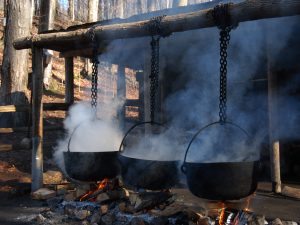
There are other ways of making maple syrup too. For most of history, people cooked maple sap outside with the help of fires. Today, you can use a pot on a stove in the kitchen. At the Arboretum, making maple syrup is mostly a two-person job. However, often Indigenous people gather with their families in the sugar bush to collect maple sap and turn it into delicious food to share.
No matter which method you use, you will know your syrup is ready when it
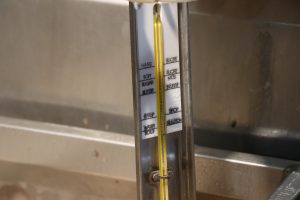
reaches the right temperature. Water boils at 212°F, but syrup boils at a higher temperature because it has lots of sugar and other chemicals in it. Maple syrup is ready when it reaches 219-220°F. When the syrup gets this hot, it is 2/3 or 67% sugar. That’s exactly what you want!
Tip 3. Keep Boiling Your Sap to Make Maple Sugar
Oops! What happens if you cook your sap too long? You could make maple sugar instead.
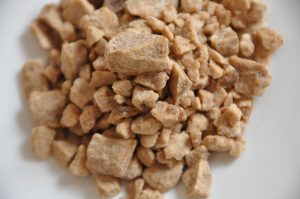
Maple sugar is another product that can be made by boiling maple sap even longer. Once nearly all of the water is boiled away, the sugar can be formed into small cakes. These are easier to store and carry than maple syrup. Ojibwe peoples have often stored this maple sugar in birchbark containers called makaks.[1]
From Sunlight to Syrup
I think maple syrup is pretty tasty, but all of this sounds like a lot of work. First, the sugar maple trees have to take sunlight and air and turn them into sugar. They use this to grow and stay healthy. If people want to collect some of this sap, they have to find a sugar maple tree and tap it. This is especially difficult in the winter when trees do not have leaves.
Once the weather warms up enough for sap to start flowing, it is time to collect the sap and to carry the heavy load to the stove or evaporator. After boiling away all of the sap’s extra water, it has finally become syrup! Yum!
Thank you for joining us on this journey to learn more about maple trees, maple sap, and maple syrup!
We’d love to have you visit us in person too. Find out more about visiting the Arboretum with your family or your class. Join us for a celebration of the season of maples with the Arboretum’s maple syrup pancake breakfast on March 27. Register for tickets by March 21, 2021.
Sweet spring wishes!
Learn More
There is always more to learn! Here are some other maple-related resources:
Learn how maple trees and maple syrup producers are adapting to climate change on ACERnet.
Watch a video from Wisconsin Public Broadcasting about how climate change will impact maple syrup.
Learn by doing with coloring and activity books by Great Lakes Indian Fish & Wildlife Commission and 1854 Treaty Authority.
The small round tube you put in the tree. Also known as a tap.
A place where maple trees grow
